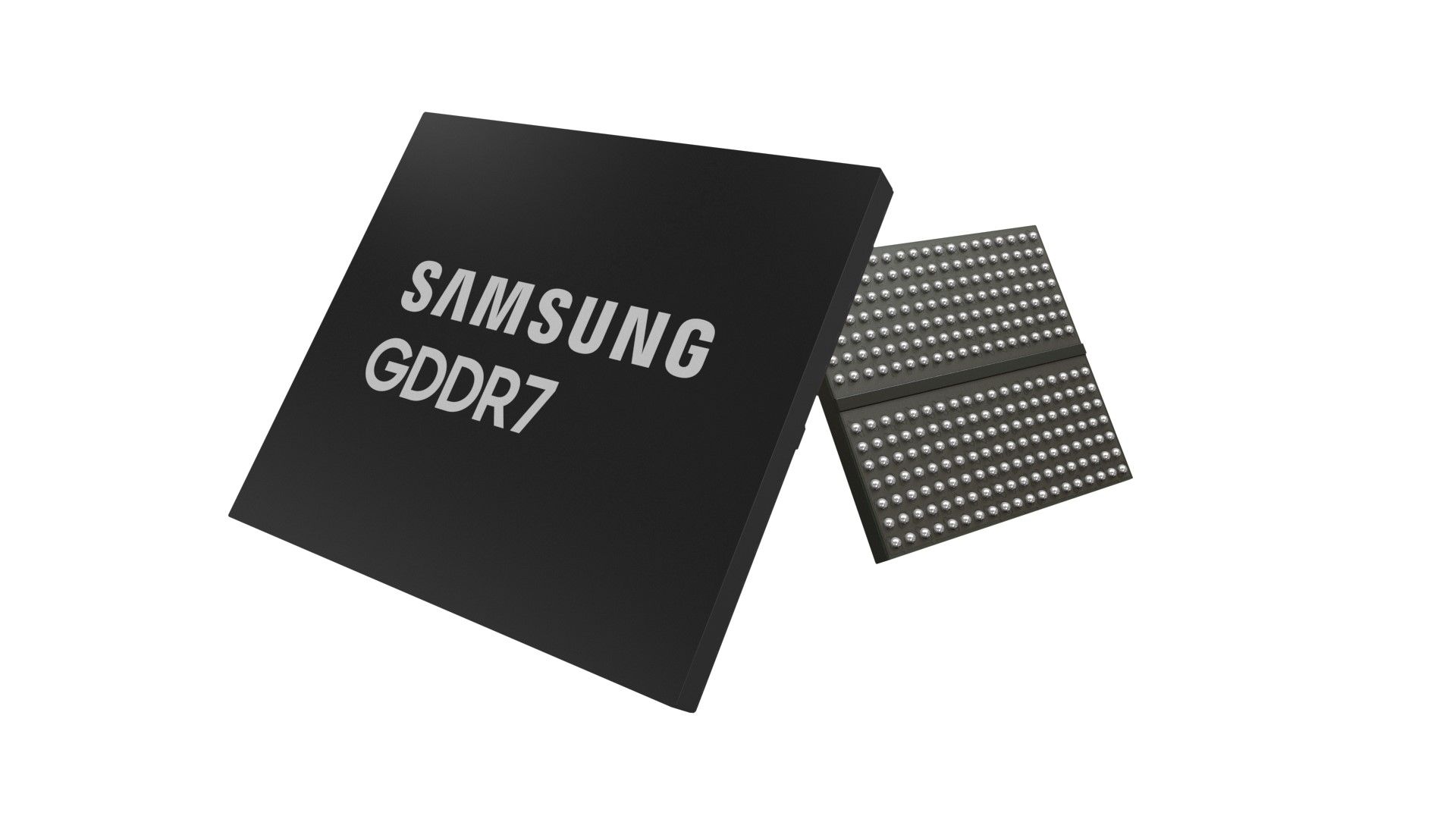
It seems like we’ve been using GDDR6 and GDDR6X video memory on graphics cards for a long time. Indeed, the first GPUs to launch with GDDR6 memory were the RTX 2000 series of GPUs launched in early 2019. Then, GDDR6X was launched with RTX 3000 in 2020, although GDDR6 is still used in a widespread manner. Luckily, we’re getting even faster memory now, as Samsung says it’s now ready to produce GDDR7 VRAM.
VRAM, as you probably know, is not the same as the regular RAM we put on our PCs. GDDR memory goes on GPUs, while DDR memory goes on everything else. GDDR memory is all about having a high bandwidth, even if that comes at the expense of latency, while DDR memory also favors a lower latency. The DDR standard is currently on its fifth iteration — DDR5 — while GDDR is now reaching GDDR7, but they’re completely unrelated.
So how good is GDDR7, really? It’s quite good, in all honesty. The GDDR7 chips made by Samsung can reach a whopping 1.5-terabytes per second (TBps), and it also feature a great speed per pin of up to 32Gbps. This is made possible thanks to GDDR7 adopting PAM3 signaling, something that will greatly increase speeds — PAM3 signaling allows for 50% more data to be transmitted per cycle than NRZ, the previous signaling method.
Furthermore, GDDR7 is also more energy efficient than GDDR6. Despite being faster, its power-saving design is 20% more efficient than GDDR6. And if you need to prioritize efficiency over everything else, like in the case of a laptop, you can save even more energy with a low-operating voltage option.
GDDR6 is already plenty fast for our games, but in addition to GDDR7 pushing the envelope even further, it will also be useful for AI processing and cars, as well as high-performance computing (at least according to Samsung, that is). It’s going to be a while before we actually see GDDR7 memory actually land on consumer GPUs. That will probably be whenever NVIDIA and AMD are ready to introduce RTX 5000 and RX 8000 GPUs, respectively. Samsung said in its announcement, “It will first be installed in next-generation systems of key customers for verification this year.”
Source: Samsung






